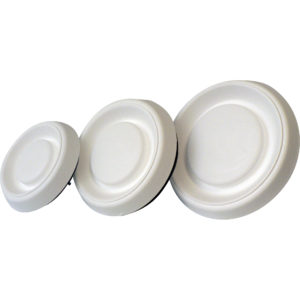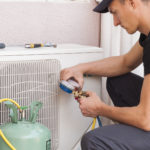 You do what you can to keep HVAC noise to a minimum with careful system design and installation that includes parts such as whisper-quiet diffusers. So, when you get a complaint about noisy HVAC, you can be sure that something is wrong with the system. It could be something as simple as a child’s toy in a vent or duct, or it could signal that equipment needs repair.
You do what you can to keep HVAC noise to a minimum with careful system design and installation that includes parts such as whisper-quiet diffusers. So, when you get a complaint about noisy HVAC, you can be sure that something is wrong with the system. It could be something as simple as a child’s toy in a vent or duct, or it could signal that equipment needs repair.
Noise complaints are an area where you can earn an incredible amount of customer loyalty or you could lose your customer forever. Patrick Peterson at Field Service Digital has great advice that will win over your clients:
“Make sure you’re hearing the same sound the homeowner is… Remember, you’re listening for what you picture may make a noise – vibrating refrigerant line, squeaky bearings, whatever. Stop imagining what would make a noise and instead actually listen for the noise.”
Once you are sure you are hearing what your customer hears, go through your diagnostic routine. Figure out what the HVAC system is doing when the noise occurs and work through the possible issues to solve the problem.
Once you’ve solved the problem, Peterson advises, ensure that the homeowner feels like the sound is gone. Once you’ve established a good sound quality, bring the problem back. Reverse your repair so that your customer hears the difference and understands that the issue has been fixed.
Peterson’s advice works because it puts the customer first and keeps them engaged in the solution to their problem. And you know that you won’t be called in next week for the same complaint.
Sources of HVAC Noise
Proper design is the first way to avoid problems, but as systems age and parts start to deteriorate, noise issues can arise with even the best design. Also, changes to the interior layout of the building can affect the function of the system, particularly when room sizes are significantly altered.
With an overall noisy system, the fix could be as simple as decreasing the fan speeds to lower the air pressure in the system. If that doesn’t work, there are a few simple things you can do to reduce noise from fans. You can install mufflers or line the ductwork with a fiberglass liner that will absorb the sound.
The dampers in a variable air volume (VAV) system can cause noise issues. If the dampers close only partially, the same volume of air will push through a smaller opening at an increased velocity, and that can get loud. Dampers with broken gears can cause banging sounds. When the control system sends a message to the dampers to close, they start the operation and then the gears slip, causing a banging noise.
The vibration of HVAC equipment in the building can cause sounds as well. In some buildings, the walls can act as carriers for this vibration and create all sorts of unintended noise. The best fix for this is to install springs under the offending equipment.
If your customer complains of drafts and noise, they could be dealing with diffusers that should be moved. When supply and return diffusers are too close together, noise and drafts occur. Insufficient numbers of diffusers can also create noise. Diffuser issues are likely the culprit in larger buildings that have been renovated since the initial HVAC installation. Occupants often make major alterations to the layout and use of a building without considering the impact on air pressure.
Every noise complaint is going to be different, of course. One aspect of this repair that is true for every building, is that once the issue is resolved, your customer will notice a huge improvement in their quality of life. Without that constant or recurring noise, they will sleep easier and be happier to be inside. And that earns you customer loyalty.



